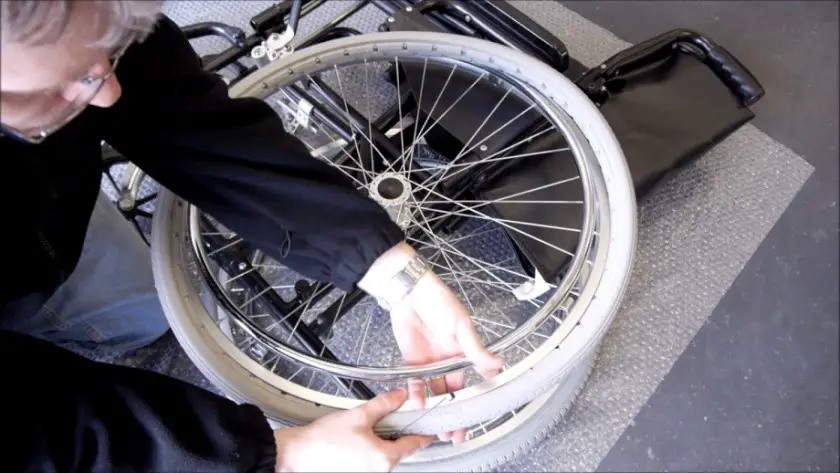Transportation is the act of conveying (or transporting) living (humans and animals) and nonliving things (objects, goods, and services) from one place to another.
This can be done by land (road and rail), water, or air.
Automobiles are vehicular inventions that help to eradicate delays, relieve stress, and ultimately make our lives easier and seamless.
An automobile is known to be “a self-propelled passenger vehicle that is used for land transport and usually consists of four to eight tires or more, and is powered by an internal combustion engine or an electric motor”.
Automobiles come in different forms and modes such as cars, vans, buses, and trucks.
When driving a car, you need your limbs (hands and legs) and your sensory organs (eyes, ears, and nose).
Table of Contents
- Amputation
- Types of Amputation
- Required Post-Amputation Professionals
- Driving and Amputees
- Can a Right Leg Amputee Drive?
- 3 Requirements for Driving After Right Leg Amputation
Amputation
Amputation is the severing of any part of the body, usually the limbs, through surgery.
Some common causes of amputation include:
- Terrible Accidents
- Gangrene
- Diabetes
- Mellitus
- Peripheral Vascular/Arterial Diseases
- Neuropathy
- Trauma/Chronic Vascular Problems
- Frost Bites
You’re at risk of amputation if you do/have the following:
- Foot ulcers
- A previous amputation
- Foot deformities
- Calluses or corns
- Nerve damage in the feet
- Smoke
- High blood sugar level
- Poor blood circulation to the extremities
- High blood pressure
- Kidney disease
Related: How to Transfer a Bilateral Amputee (Step-by-Step Guide)
Types of Amputation
There are two basic types of amputation, which are further divided into various subtypes. They are:

Upper Limb Amputation
It includes the following amputations:
- Digit
- Partial Hand
- Wrist
- Transradial
- Elbow
- Trans-humeral
- Shoulder
- Forequarter
Lower Limb Amputation
This includes the following amputations:
- Digit
- Foot
- Ankle
- Transtibial
- Knee
- Transfemoral
- Hip
- Hemipelvectomy
Required Post-Amputation Professionals
Due to the after-effects of amputation, you might need the services of the professionals below, apart from your doctor and surgeon, for follow-up.
- Physical therapist
- Social worker
- Occupational therapist
- Endocrinologist
- Mental health provider
Related: How Amputees Wear Pants Easily (Step-by-Step Guide)
Driving and Amputees
The Design of Cars
Most cars are designed in such a way that at the driver’s seat, the clutch comes first, followed by the foot brake, then the accelerator.
Imagine writing the numbers 1, 2, 3 and operating these numbers with your leg instead of your hands.
The clutch represents 1, which is by your left foot.
The accelerator represents 3, which is by your right foot.
The foot brake represents 2, which is in the middle of 1 and 3.
Driving laws require that you clutch with your left foot, accelerate with your right foot, and brake with your right foot.
But have you ever wondered why you brake with the right foot and not the left foot? Let’s navigate the functions of these foot/floor pedals.
Functions of the Clutch, Accelerator, and Brake
These floor pedals are close to being the brain of your car as your car might not function or go anywhere without these three. They help to control the speed and power of your car.
The Clutch
The clutch is crucial to the functions of the gear. Whenever you need to make your car go faster or slower, then you need to increase or decrease the gears.
Thus, before operating the gear, you need to let the clutch down first using your left foot.
You then adjust the gear to the desired number, after which you release the clutch gradually and accelerate a little.
The Accelerator
The accelerator helps you whenever you need to pick up speed with your vehicle.
The faster you need your car to go or the more speed you want, the more pressure you apply on the accelerator with your right foot.
But you need to be careful whenever you’re applying pressure and pressing your foot down on the accelerator so that you don’t lose control of your car.
The Brake
The foot brake is the middle pedal between the clutch and the accelerator.
Whenever you need to bring your car to a halt or you encounter a sudden stop, the foot brake is the control that will help you in achieving that.
It works alongside the accelerator. This explains why the right foot is used to apply the brake on a moving car.
Push down the pedal gently when applying the brake.
Once you do this, your brake light comes on and this helps in alerting the car behind you that your car is about to take a halt.
Having explored these controls, how then do you make use of these pedals (especially the brake and the accelerator) if your right leg has been amputated?
Related: Is an Amputee Considered Disabled? (Answered)
Can a Right Leg Amputee Drive?

You must have been anticipating the answer to this question and are probably worried if you can still drive after having your right leg amputated. Well, here’s some good news for you. You can drive after undergoing a right leg amputation.
However, some modifications have to be made to your car, you need to inform your local licensing authority, and you need to pass the disabled driving test.
Only after these conditions have been met will you be able to drive.
3 Requirements for Driving After Right Leg Amputation
Make Modifications to Your Car
The foot controls of your car need to be modified after your right leg is amputated.
The accelerator needs to be moved to the left side of the brake. This means that the accelerator will now have to be between the clutch and the brake.
Your left foot will then be doing all of the work for the three controls. And you have to adjust your sitting position and be extra careful when driving.
Inform Your Licensing Authority
Once you become amputated and you have plans to resume driving, you need to inform the licensing authority so that this exception will be added to your license.
By doing this, you won’t get arrested for making modifications to your car or driving with a prosthetic leg.
Pass the Disabled Driving Test
Most individuals that undergo an amputation due to an illness or a disability usually have the option of using a prosthetic limb.
A prosthetic limb is an artificial limb, like an arm or leg, which replaces the human limb that is missing.
If you decide to use a prosthetic leg to replace your right leg that has been amputated and you plan to continue driving, then you have to undergo and pass a disabled driving test.
A disabled driving test is an assessment that is carried out by the licensing authority to check if your limited cognitive and physical abilities can enable you to independently and safely drive a car.
As soon as you pass this test, then you can resume your driving adventures without having to depend on anyone.



